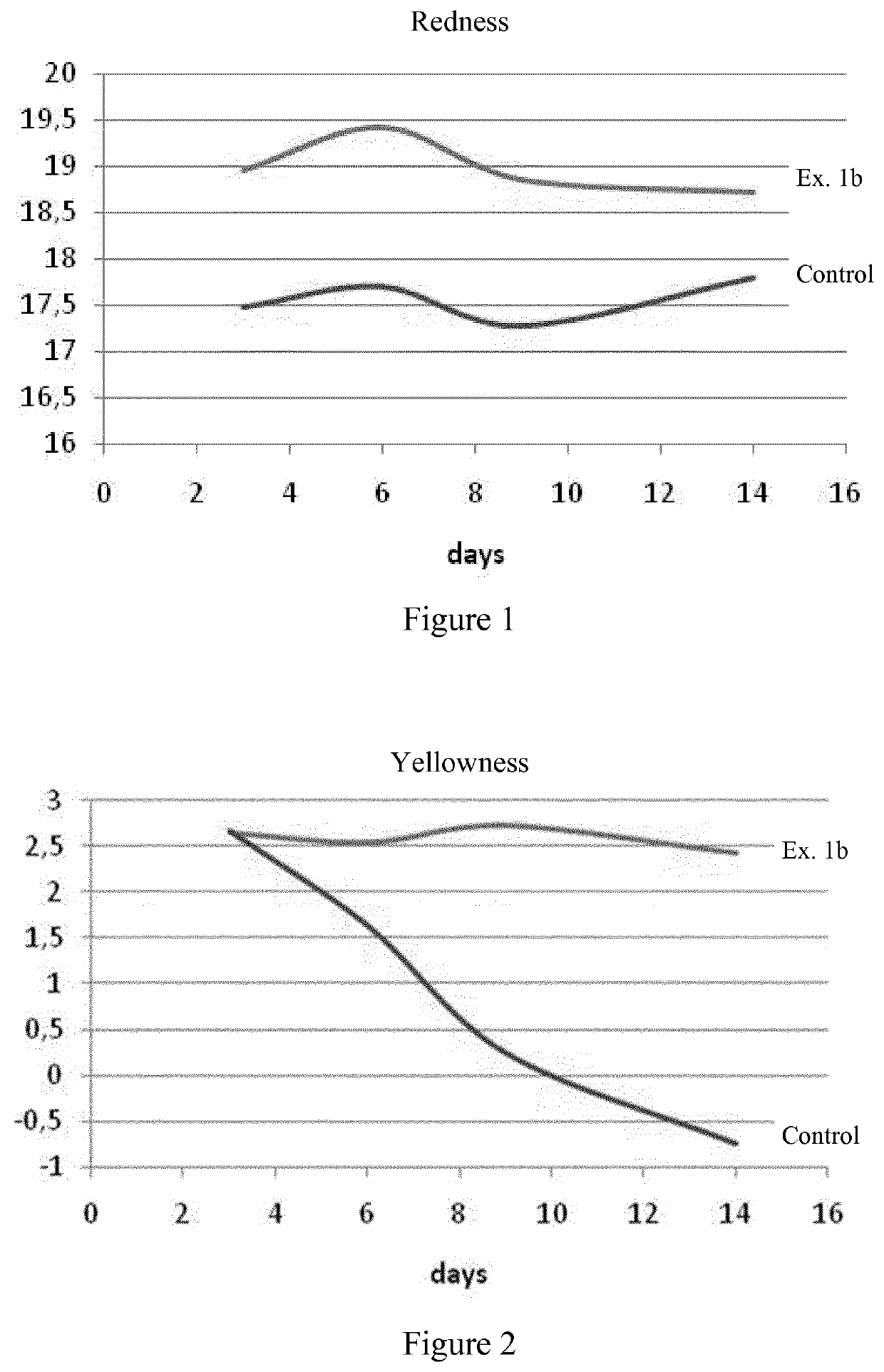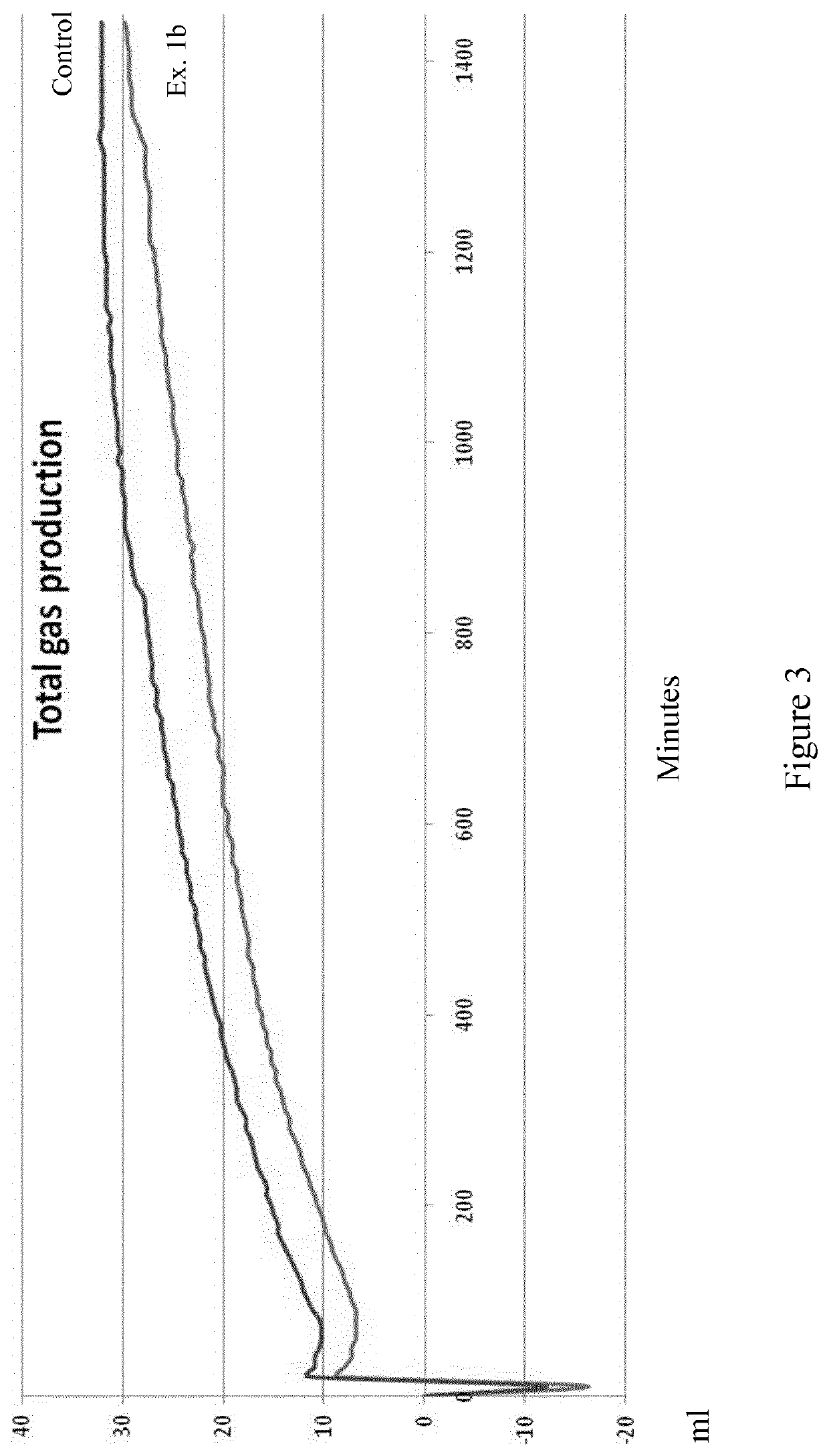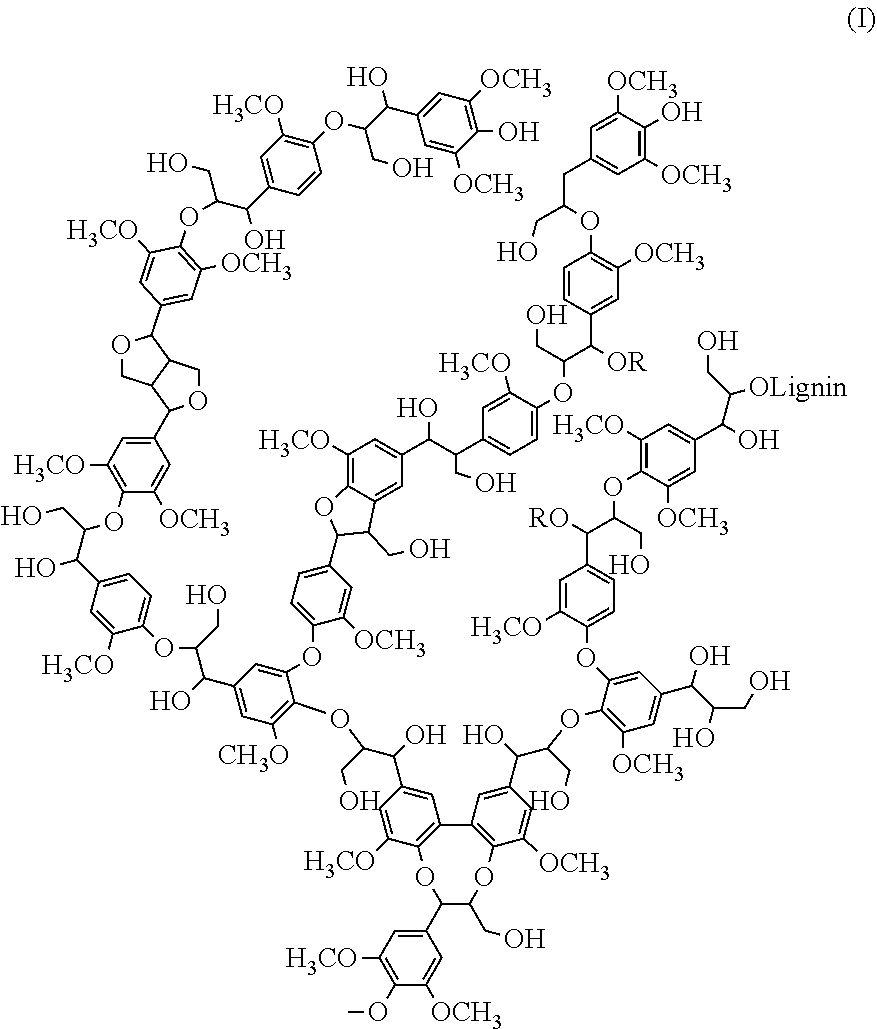Use of a lignin fraction as a human and animal food supplement ingredient
a technology of lignin and lignin fraction, which is applied in the field of human and animal food supplement ingredients, can solve the problems of resistance microorganisms that are more difficult to treat, lack of new drug development, and increased cost, so as to improve the fertility of livestock, improve the quality and shelf life of meat, and improve the production and quality of milk
- Summary
- Abstract
- Description
- Claims
- Application Information
AI Technical Summary
Benefits of technology
Problems solved by technology
Method used
Image
Examples
example 1
[0143]Organosolv lignin obtained from Beech wood (Fagus sylvatica) was subjected to a base-catalysed depolymerization (BCD). The BCD process is run at 280° C. and 250 bar for 8 minutes at pH 12-14. The resulting lignin product consisted of a liquid fraction and a solid fraction.
[0144]These fractions were then separated.
[0145]The liquid lignin fraction was an oil and had the following characteristics:[0146]Single Species: Fagus sylvatica
Mw100-300 Da (1-2 phenylpropane units)phenols 0%guaiacols15-20%syringols50-60%catechols and metoxycatecols 5-10%oligomers / unknown15-30%
[0147]The solid lignin fraction had the following characteristics:[0148]Single Species: Fagus sylvatica
Mw800-1,500 Da (4-8 phenylpropane units)Mn 300-700 Da (2-4 phenylpropane units)[0149]Structures of OH-groups:
aliphatic0.2-0.4mmol / gcarboxylic0.3-0.5mmol / gcondensated and syringyl1.0-2.0mmol / gguaiacyl0.4mmol / gcatecholic and p-OH-phenyl1.0-1.8mmol / g
example 1a
[0150]50 g of the oily lignin fraction (5% w / w) above has been mixed with 950 g of 1,3-propylene glycol, and warmed at 40-50° C.
[0151]The mixture has been cooled to room temperature, thus obtaining a viscous solution (shortly referred to as “LMW12”).
example 1b
[0152]100 g of the solid lignin fraction (10% w / w) above has been hot-mixed with 800 g of 1,3-propylene glycol, and 100 g of NH4OH (solution at 30%).
[0153]The mixture has been cooled to room temperature and then filtered off, thus obtaining a black solution (shortly referred to as “LMW11”).
PUM
| Property | Measurement | Unit |
|---|---|---|
| weight average molecular weight | aaaaa | aaaaa |
| average molecular weight | aaaaa | aaaaa |
| molecular weight | aaaaa | aaaaa |
Abstract
Description
Claims
Application Information
 Login to View More
Login to View More - R&D
- Intellectual Property
- Life Sciences
- Materials
- Tech Scout
- Unparalleled Data Quality
- Higher Quality Content
- 60% Fewer Hallucinations
Browse by: Latest US Patents, China's latest patents, Technical Efficacy Thesaurus, Application Domain, Technology Topic, Popular Technical Reports.
© 2025 PatSnap. All rights reserved.Legal|Privacy policy|Modern Slavery Act Transparency Statement|Sitemap|About US| Contact US: help@patsnap.com



